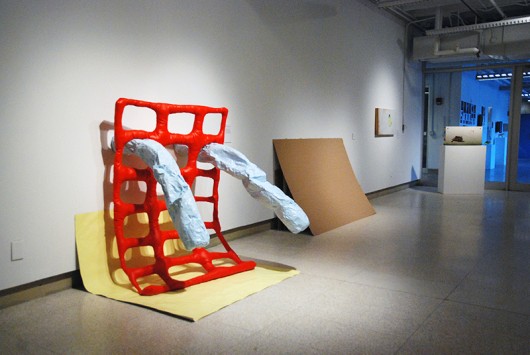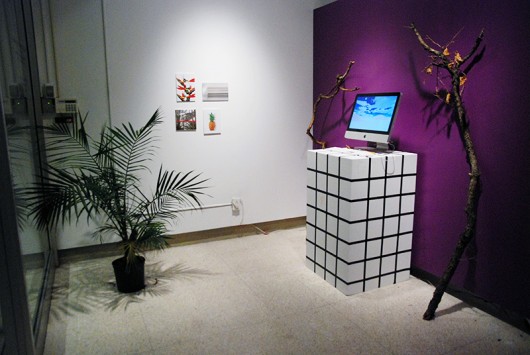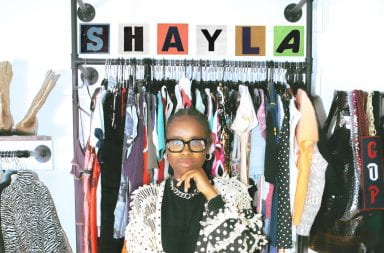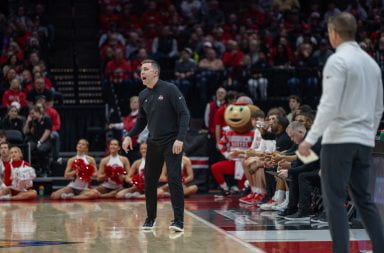From traditional ceramics and paintings to art and technology, students can see a diverse display of art projects from graduate students of the Department of Arts.
First-year graduate students will be displaying art projects they worked on during their first semester, while third-year graduate students will be displaying art projects that they have been researching and working for the past three years, according to Professor Rebecca Harvey, chair of the Ohio State Department of Art.
“They represent some of the best and brightest talent out in the world today,” Harvey said in an email. “When the graduate students arrive here, they are already highly accomplished artists, and the depth of their commitment and their willingness to risk and experiment are hallmarks of the program.”
OSU’s graduate program of fine arts ranks among some of the top programs in the country, according to the department’s website. It consists of seven areas of study: ceramics, painting and drawing, glass, printmaking, art and technology, sculpture and photography.

First-year MFA Exhibition, pictured from left to right: Alicia Little’s “To slowly unravel, it did, and then it didn’t,” Max Fletcher’s “Stack,” Niko Dimitrijevic’s “Call” and Niko Dimitrijevic’s “Response.” Credit: Courtesy of Hopkins Hall Gallery.
Ian Honoré, a graduate student specializing in art and technology, said that he was drawn to the department’s heavy emphasis on research and the advanced 3-D and computer programs.
According to Harvey, students already come with incredibly strong backgrounds in their areas of emphasis. During their research, they work to stretch and expand the boundaries of both their medium and field.
“The art world is ever-changing,” Harvey said. “It is a cultural catalyst, ideas mesh and gel. New ideas come forward.”
Harvey explained that the first-year exhibition is a bit more unpredictable and experimental than the third-year exhibition, as it consists of just one semester of research. Because of time constraints, students are just beginning to poke at the parameters of their field. They usually focus on just one single project or single group of ideas.
Honoré worked on his project about 15 to 20 hours weekly last fall semester. It encompasses several different aspects of art, including images, a soundscape and a 3-D game space. The entire exhibit deals with the language of coding.
“I’ve had the themes for my project for about two years. But it was only once I learned new things and programs from school here, such as 3-D game spaces that allowed me to fully implement those themes,” Honoré said.
Third-year students have had three years to experiment and understand their final projects. Their projects can be massive, ranging from a wall of paintings to room-size installations. Both exhibitions are possible only because of countless studio hours, and lots of trial and error, according to Harvey.
Harvey encourages non-art students to see the exhibition as well.

First-year MFA Exhibition, various works of artists Ian Honoré sit on display. Credit: Courtesy of Hopkins Hall Gallery.
“It’s not just art reflecting on art,” she said. “It’s art reflecting on the world. So much of what we do is thinking about something in a different way. And isn’t that partly what going to a university is all about?”
The first-year exhibit will be on display until Feb. 23 in Hopkins Hall Gallery. The third-year exhibit will be open from Tuesday until March 19 at the Urban Arts Space located at 50 W. Town St. There will also be a reception for the third-year exhibit at the Urban Arts Space on Saturday from 5 to 7 p.m.


![Local fashion experts guide college students through shopping and dressing for their upcoming summer jobs or internships. Credit: Dreamstime (via TNS) [Original caption: How does smart casual differ from snappy casual, glitzy casual, dressy casual, party casual and business casual?]](https://www.thelantern.com/files/2024/04/LIFE-FAM-BORGMAN-COLUMN-DMT-7432064dd4242c4c-384x253.jpg)